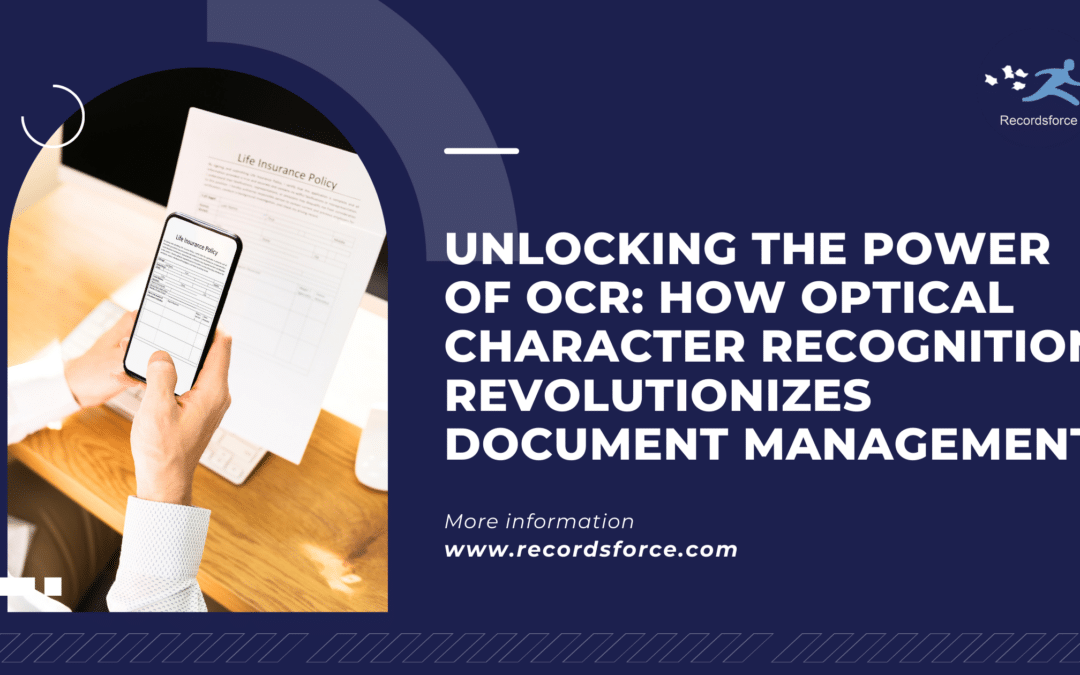Businesses are increasingly reliant on digital documents for their day-to-day operations. However, many organizations still struggle with managing large volumes of paper documents, leading to inefficiencies and increased costs. This is where Optical Character Recognition (OCR) technology comes in, revolutionizing document management by converting scanned paper documents into editable and searchable digital files.
What is OCR?
OCR is a technology that converts different types of documents, such as scanned paper documents, PDF files, or images captured by a digital camera, into editable and searchable data. By using OCR, businesses can extract text from these documents, making it easier to manage, store, and access information.
Key Benefits of OCR in Document Management
- Improved Searchability: OCR technology enables businesses to make their scanned documents searchable. This means that users can quickly find the information they need within a document, saving time and improving productivity.
- Enhanced Accessibility: OCR makes documents accessible to individuals with disabilities. By converting scanned documents into text, OCR technology enables screen readers to read the content aloud, making it easier for visually impaired individuals to access information.
- Cost Savings: By digitizing paper documents using OCR, businesses can reduce costs associated with physical storage, printing, and document retrieval. Additionally, OCR helps streamline document workflows, reducing the need for manual data entry and increasing efficiency.
- Data Extraction: OCR can extract key data from documents, such as names, addresses, and invoice numbers. This extracted data can then be used for various purposes, such as populating databases or automating data entry tasks.
- Improved Accuracy: OCR technology has significantly improved in accuracy over the years, reducing errors in document conversion. This ensures that the converted digital documents are reliable and accurate.
Real-World Applications of OCR
- Document Digitization: Businesses can use OCR to digitize their paper documents, enabling them to store and manage documents more efficiently.
- Invoice Processing: OCR can be used to extract key data from invoices, such as invoice numbers, dates, and amounts, speeding up the invoice processing workflow.
- Data Entry Automation: OCR can automate data entry tasks by extracting data from scanned documents and entering it into databases or other systems.
- Archiving and Retrieval: OCR makes it easier to archive and retrieve documents, as users can quickly search for specific keywords or phrases within documents.
Challenges and Future Trends
While OCR technology offers numerous benefits, there are also challenges to consider. For example, OCR accuracy can be affected by the quality of the scanned document, the font used, and the language of the text. Additionally, as businesses continue to generate and manage large volumes of documents, there is a growing need for more advanced OCR technologies that can handle complex document formats and languages.
Looking ahead, OCR is expected to play a key role in the evolution of document management. Future trends include the integration of OCR with artificial intelligence (AI) and machine learning (ML) technologies, which will further improve OCR accuracy and enable more advanced document processing capabilities. Additionally, as businesses increasingly adopt cloud-based document management solutions, OCR is expected to become more accessible and scalable, allowing businesses of all sizes to benefit from its advantages.
Conclusion
OCR technology has revolutionized document management by making it easier to convert, store, and access information. Businesses that leverage OCR technology can improve their efficiency, reduce costs, and enhance their overall document management processes. As OCR continues to evolve, its applications in document management are expected to expand, further transforming the way businesses manage their documents in the digital age.

